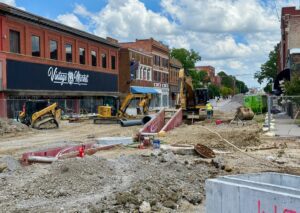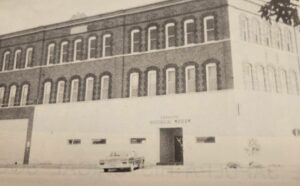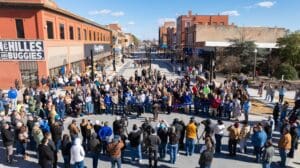Rachel Whitney, Curator,
Sapulpa Historical Museum
This week in Sapulpa history, in 1906, the local newspaper showed its readers what makes Sapulpa a great city to live in.
On May 11th, 1906, the Sapulpa Light, predecessor to the Sapulpa Herald, ran several articles in their paper, promoting the town. The articles revolved around the virtues of Sapulpa, and what there is to offer about the City of Sapulpa.
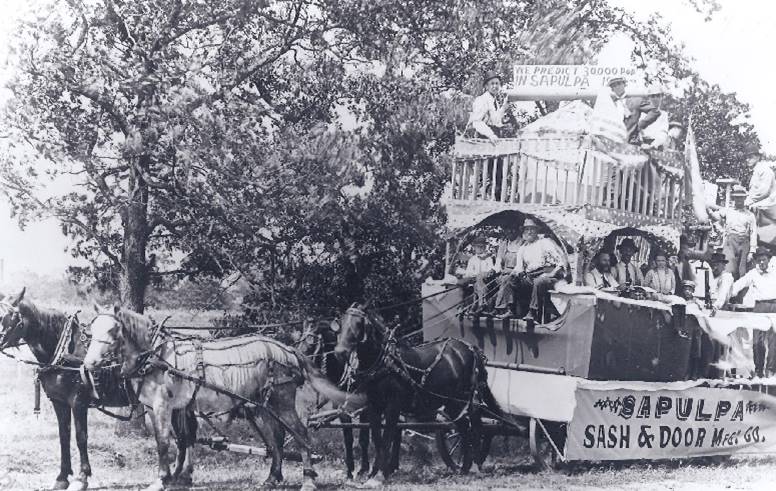
One article touting Sapulpa was carried under the headline: “City of Destiny.” “The city of Sapulpa is just entering an epoch of the most rapid growth it has ever experienced. There is nothing now that can keep it down.” It claimed that within two years, the city will have ten thousand people, stating, “a conservative estimate is that in two years, Sapulpa will be a city of ten thousand people.*”
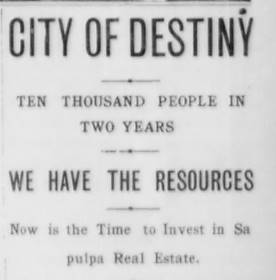
*Note: the town had between 3,000 to 7,000 people in 1906. By 1910, it had over 8,000. By 1920, it had over 10,000. It is true, it had a rapid growth. Sapulpa became the second highest growth in percentage in these ten years – 1900 to 1910. Oklahoma City grew over 500%; Bartlesville grew over 700%; Sapulpa grew over 800%; Tulsa grew over 1,000%.
“Now is the time to invest in Sapulpa real estate…There is not a vacant house in the city – not one, and a four-roomed, $600 house will for $15 to $20 per month, and $15.50 in the outermost edge of the city.*”
*Note: $600, $15, $15.50, and $20 then is about $20,000, $500, $520, and $700 today.
And what was bringing people into town? “It has gas, it has oil, it has coal, it has good water, and plenty of it, it has a big railroad payroll, constantly on the increase, it has rich farmland tributary, and what is more it has a united people.”
The Frisco Railroad kept expanding their facilities in Sapulpa. “It has long been apparent that Sapulpa is a favorite child of the Frisco system.” Frisco made Sapulpa one of their principal divisions in their system. About 400 trainmen made this their headquarters, while 300 workers were employed in various jobs in the roundhouse, track gangs, offices, bridge shops, paint shops, and in the depots, both freight and passenger.
The railroad was also planning to build an elegant new depot in the near future, at the “Y” in the tracks for the new Harvey House. At that time, Sapulpa had the second-largest payroll of any town in the Indian Territory. “Sapulpa is destined to have the largest payroll of any city in the Territory…at the present time, there is only one town in the Indian Territory that has a larger payroll than Sapulpa.*”
*Note: although the newspaper did not indicate which town is number one, our rivals with Tulsa were always mentioned in the papers, and the comparisons of Tulsa and our town were always guaranteed in a story or two about our growing cities.
By this time in 1906, ten wells had been drilled in the new Glenn field, just east of town*. The largest being the one by Creek Oil and Gas Company. It was on the Andrew Sewell allotment and was flowing about 960 barrels a day. Another well on the Cooper tract, five miles west of town, was producing 20 barrels a day. These developments were sure to make Sapulpa an oil and gas center.
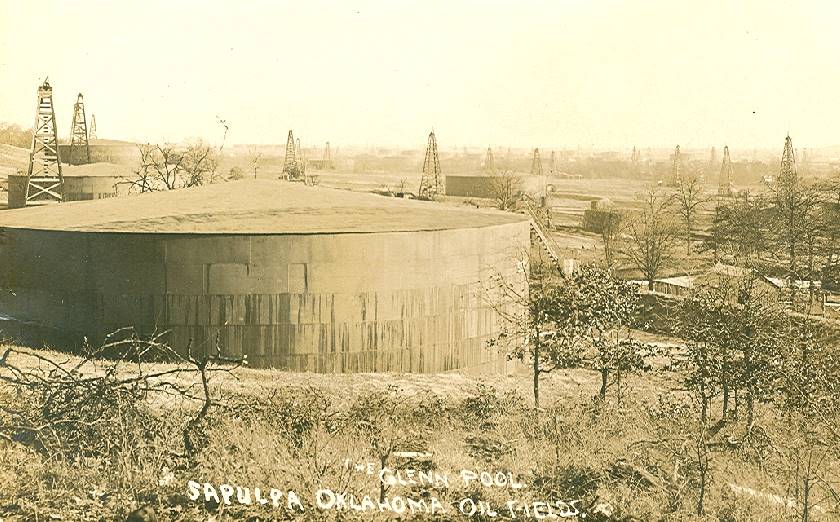
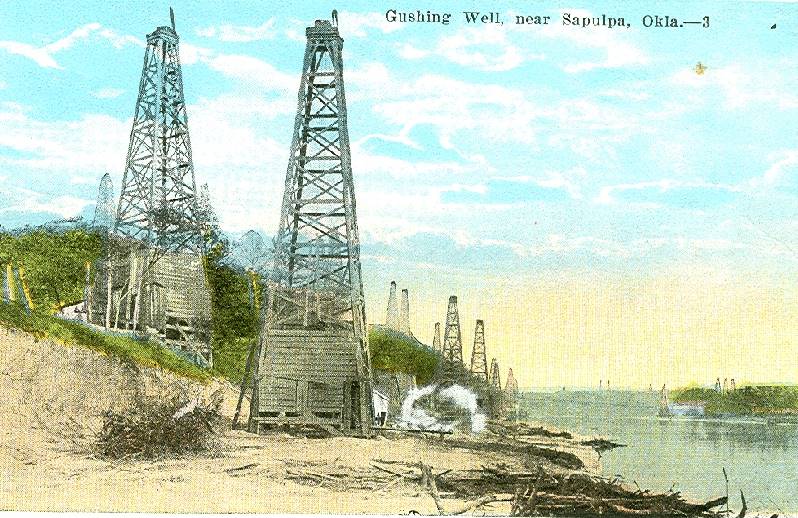
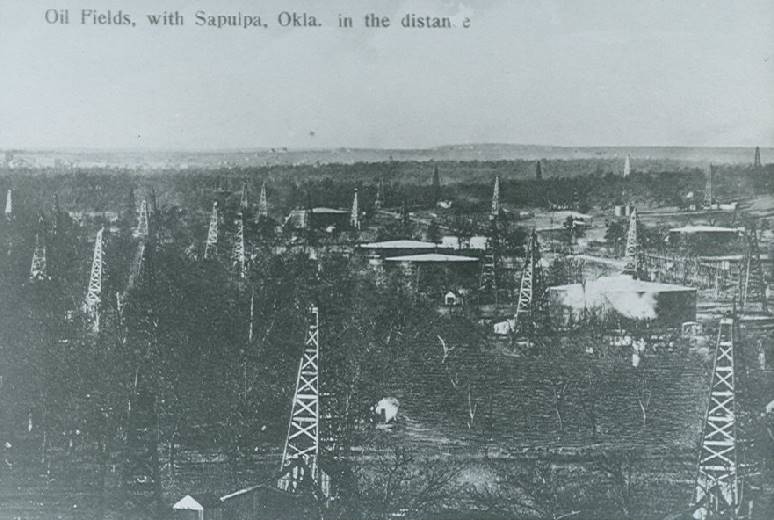
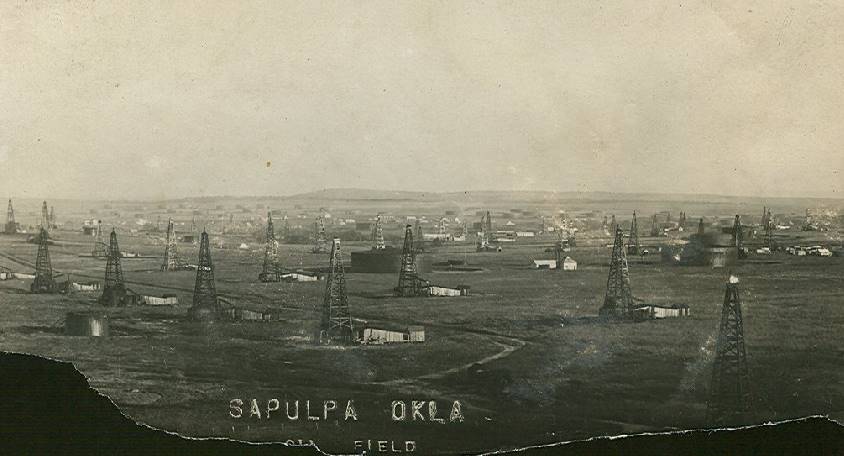
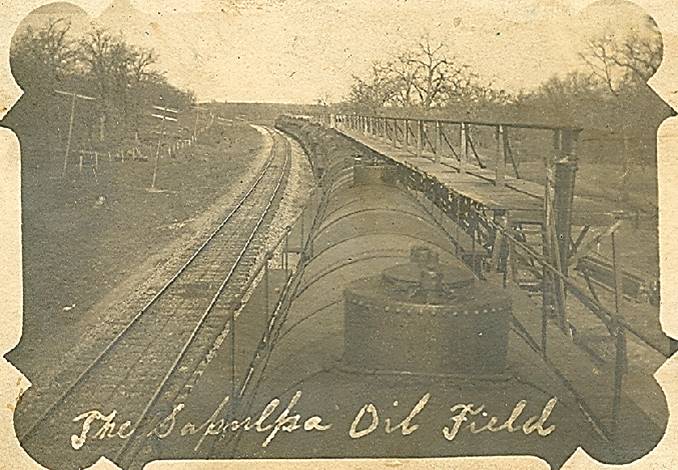
*Note: one of the myths about Sapulpa’s population during the oil-boom was that people once thought Sapulpa was larger than Tulsa. This myth is because we included more townships into our populations, and often the newspapers would exaggerate about our numbers.
The newspaper also highlighted many businesses and people that set up shop in Sapulpa. Listed in the paper were Charles Whitaker Drug store, R.A. Bowden & Co. Flour and Produce, Ralph Bowden’s Ice Cream and Confectionary, J.B. Gorman’s Meat Market, J. Monhan’s Tailor & Laundry, J.S. Powell’s Ice Cream Parlor, G.R. Williams’ City Meat Market B.M Van Orma’s Groceries, S. Richey Frisco Drug Store, J.O. Rygg’s Tailor, Charles Leeper’s New Meat Market, N.E. Swickward’s Minnetonka Lumber Co., Union Hardware, Farmers and Merchants Bank, and American National Bank, and many, many, others. The newspaper added many pictures of businesses.
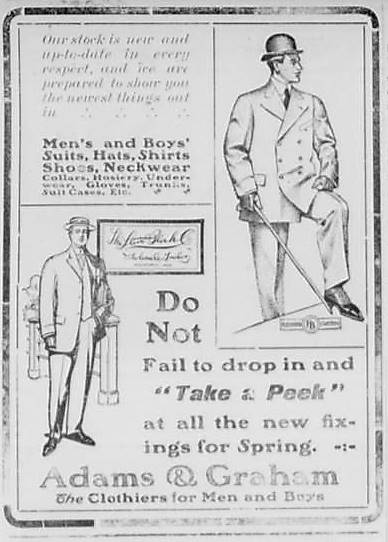
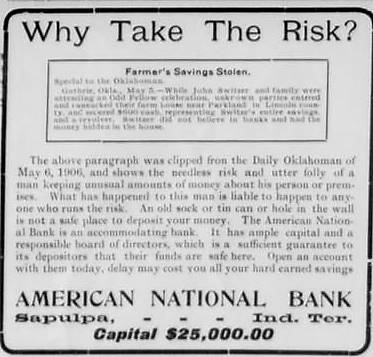
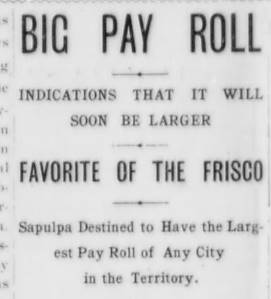
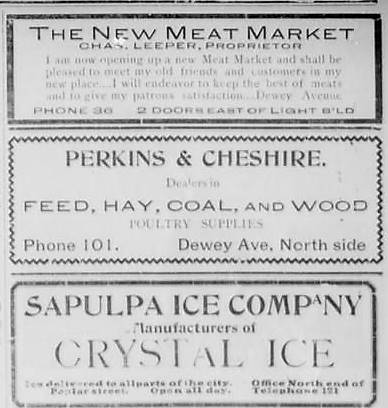
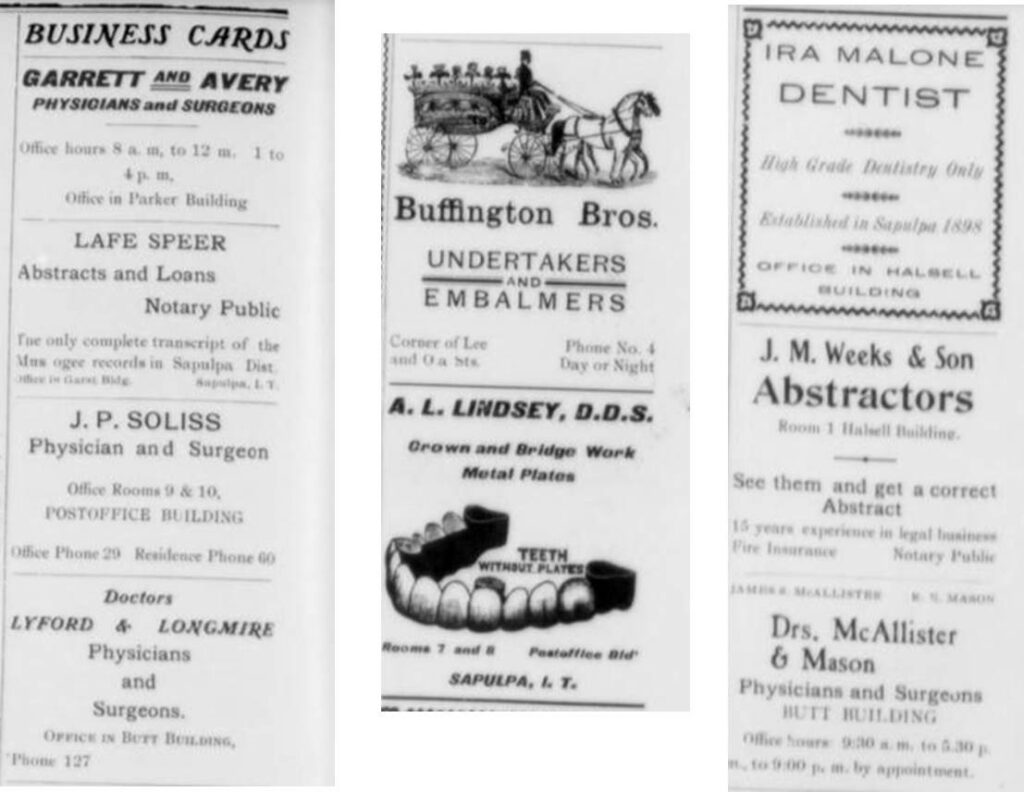
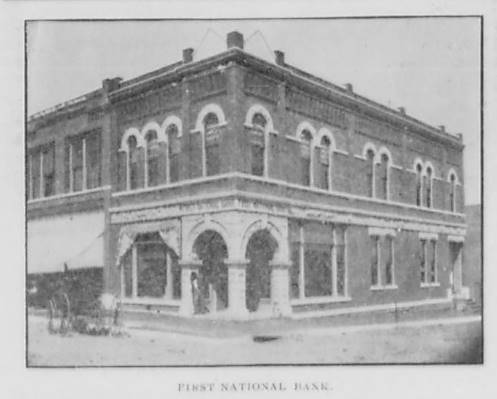
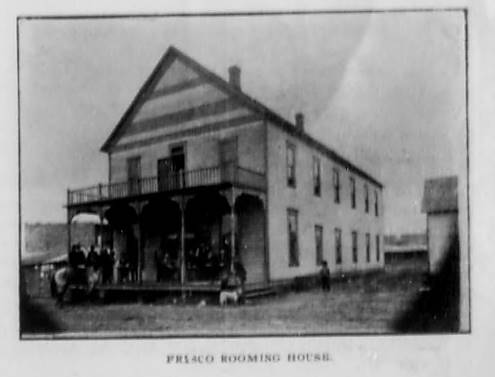
Many businesses, companies and franchises, families, and customs arrived and thrived in Sapulpa, even before statehood in 1907. The town’s population kept growing. It increased every decade when the Census report came out, except in one decade there was a dip in the population. When the Census came out in 1930, the population decreased, and this was soon after Frisco left Sapulpa.


